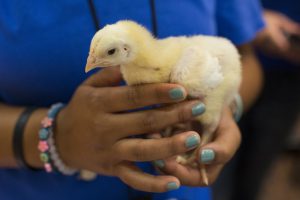Welcome to the Nesting Box, a new weekly blog about owning a raising backyard poultry. As the livestock agent for UF/IFAS Extension Escambia County, I frequently get calls from citizens who are looking to start a backyard flock, but usually do not know where to start. Each week, we will discuss various topics related to owning chickens and how you can have fun and success with your chickens. We will discuss breeds, equipment, housing, bio security, nutrition and even have some funny stories to share along the way.
Backyard poultry have gained popularity within the United States as a sustainable and small farm production animal that can be kept in a relatively small area. Owning poultry is relatively low cost and doesn’t require a lot of time in your daily schedule. Understanding the equipment and supplies needed for a successful flock is important and we will discuss in a later blog. You will also need to read and understand local ordinances that may affect your ability to own poultry, especially if you live within city limits. County and city ordinances provide guidance to ensure that poultry owners In the City of Pensacola and Escambia County, local governments have passed ordinances to make it easier for residents in non-agriculturally zoned areas to legally keep poultry for personal egg and meat consumption.
So what came first, the chicken or the egg? It’s one of life’s great mysteries, but for the purposes of this blog, we are going to start with the chick. Like other fowl, chickens are born from an egg. After roughly 21 days of development, chicks will emerge from the egg to begin its life. Chicks are sensitive to temperature when they are born due to only having down feathers that do not provide the same body insulation as their adult feathers. Keeping chicks warm and comfortable is important so that they do not get chilled which can lead to sickness and death. We encourage new owners of chicks to have a warm safe place, typically a brooder, for the chicks to live in for several weeks. This can be something as simple as a plastic tub with shavings and an overhead heat lamp. The brooder needs to be around 95 degrees for the first week and can decrease slightly there after. A commercial feed from a local co-op or ag store will provide adequate nutrition for the growing chick, and as always plenty of fresh clean water.

Chick care takes time and patience but soon your small chickens will be growing and getting stronger. Chicks will stay in the brooder for around 4-6 weeks until they start to grow permanent feathers. It’s important to not move the chicks away from their heated brooder too soon as they are still susceptible to the weather. Once your chicks are large enough, they can transition to the coop and continue to grow until they reach maturity to begin laying eggs.
Tune in next week as we discuss our first highlighted poultry breed, the Plymouth Barred Rock
Additional resources:
Escambia County Backyard Poultry
 0
0
